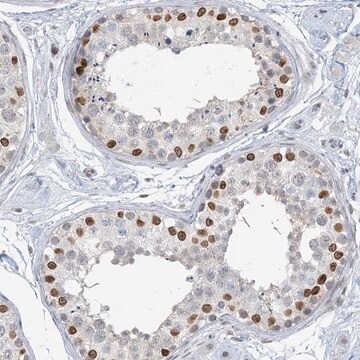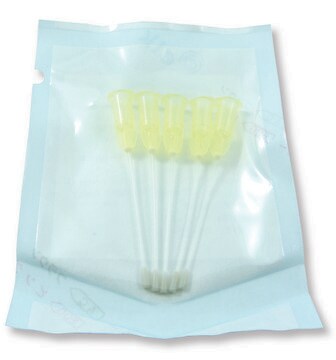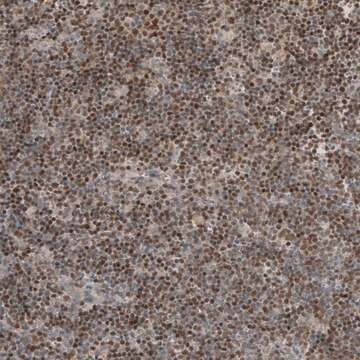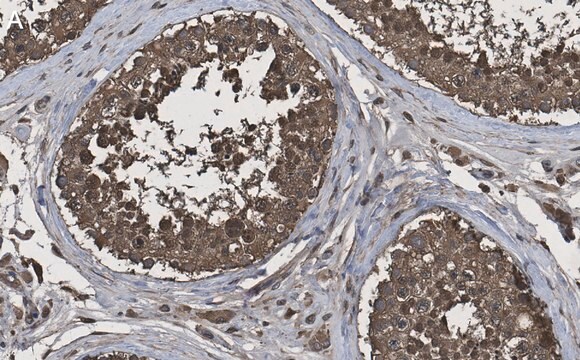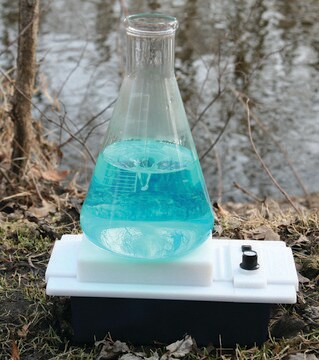推荐产品
生物源
rabbit
共軛
unconjugated
抗體表格
affinity isolated antibody
抗體產品種類
primary antibodies
無性繁殖
polyclonal
產品線
Prestige Antibodies® Powered by Atlas Antibodies
形狀
buffered aqueous glycerol solution
物種活性
human
技術
immunofluorescence: 0.25-2 μg/mL
immunohistochemistry: 1:50-1:200
免疫原序列
CSFPLDPAAVKKPSFCIADILHAGVGDLGAAPEGLAGASAAALTAHLGSVHPHASFQAAARSPLRPTPVVAPSEVPAGFPQRLSPLPAAYHHHHPQQQQQQQ
UniProt登錄號
運輸包裝
wet ice
儲存溫度
−20°C
目標翻譯後修改
unmodified
基因資訊
human ... HLX(3142)
免疫原
H2.0-like homeobox protein recombinant protein epitope signature tag (PrEST)
應用
All Prestige Antibodies Powered by Atlas Antibodies are developed and validated by the Human Protein Atlas (HPA) project and as a result, are supported by the most extensive characterization in the industry.
The Human Protein Atlas project can be subdivided into three efforts: Human Tissue Atlas, Cancer Atlas, and Human Cell Atlas. The antibodies that have been generated in support of the Tissue and Cancer Atlas projects have been tested by immunohistochemistry against hundreds of normal and disease tissues and through the recent efforts of the Human Cell Atlas project, many have been characterized by immunofluorescence to map the human proteome not only at the tissue level but now at the subcellular level. These images and the collection of this vast data set can be viewed on the Human Protein Atlas (HPA) site by clicking on the Image Gallery link. We also provide Prestige Antibodies® protocols and other useful information.
The Human Protein Atlas project can be subdivided into three efforts: Human Tissue Atlas, Cancer Atlas, and Human Cell Atlas. The antibodies that have been generated in support of the Tissue and Cancer Atlas projects have been tested by immunohistochemistry against hundreds of normal and disease tissues and through the recent efforts of the Human Cell Atlas project, many have been characterized by immunofluorescence to map the human proteome not only at the tissue level but now at the subcellular level. These images and the collection of this vast data set can be viewed on the Human Protein Atlas (HPA) site by clicking on the Image Gallery link. We also provide Prestige Antibodies® protocols and other useful information.
生化/生理作用
H2.0-like homeobox protein is a protein encoded by the HLX gene in humans. It is referred as HB24 and HLX1. It is expressed in proliferating and migrating human trophoblast cells. Its expression is found to decreased significantly in human FGR. It regulates human trophoblast-derived cell migration, and that hepatocyte growth factor (HGF), by receptor c-met, acts through this gene to control cell migration. Polymorphisms in the this gene increase the risk for childhood asthma. It is primarily expressed in cytotrophoblast cell types in the human placenta and is involved in cytotrophoblast proliferation and down-regulation of cell differentiation.
特點和優勢
Prestige Antibodies® are highly characterized and extensively validated antibodies with the added benefit of all available characterization data for each target being accessible via the Human Protein Atlas portal linked just below the product name at the top of this page. The uniqueness and low cross-reactivity of the Prestige Antibodies® to other proteins are due to a thorough selection of antigen regions, affinity purification, and stringent selection. Prestige antigen controls are available for every corresponding Prestige Antibody and can be found in the linkage section.
Every Prestige Antibody is tested in the following ways:
Every Prestige Antibody is tested in the following ways:
- IHC tissue array of 44 normal human tissues and 20 of the most common cancer type tissues.
- Protein array of 364 human recombinant protein fragments.
聯結
Corresponding Antigen APREST84766
外觀
Solution in phosphate-buffered saline, pH 7.2, containing 40% glycerol and 0.02% sodium azide
法律資訊
Prestige Antibodies is a registered trademark of Merck KGaA, Darmstadt, Germany
免責聲明
Unless otherwise stated in our catalog or other company documentation accompanying the product(s), our products are intended for research use only and are not to be used for any other purpose, which includes but is not limited to, unauthorized commercial uses, in vitro diagnostic uses, ex vivo or in vivo therapeutic uses or any type of consumption or application to humans or animals.
未找到合适的产品?
试试我们的产品选型工具.
儲存類別代碼
10 - Combustible liquids
水污染物質分類(WGK)
WGK 1
閃點(°F)
Not applicable
閃點(°C)
Not applicable
個人防護裝備
Eyeshields, Gloves, multi-purpose combination respirator cartridge (US)
Gayathri Rajaraman et al.
Reproduction, fertility, and development, 20(3), 357-367 (2008-04-12)
Homeobox genes are a large family of transcription factors. Of these, the HLX homeobox gene (previously known as HLX1 and HB24) is important for normal placentation. We have previously shown that HLX mRNA expression is significantly reduced in fetal growth-restricted
Gayathri Rajaraman et al.
Biology of reproduction, 83(4), 676-683 (2010-06-18)
Homeobox gene transcription factors play a critical role in normal placental development and are expressed in specialized trophoblast cells. Abnormal trophoblast function is associated with clinically significant pregnancy disorders, including fetal growth restriction (FGR). Our previous studies demonstrated that homeobox
Kathrin Suttner et al.
The Journal of allergy and clinical immunology, 123(1), 82-88 (2008-11-29)
Major transcription factors controlling T(H)1 and T(H)2 development, such as T-box transcription factor and GATA3, might be centrally involved in asthma and atopic diseases. Only recently, the homeobox transcription factor H.20-like homeobox 1 (HLX1), interacting closely with T-box transcription factor
Charles Y Lin et al.
Nature, 530(7588), 57-62 (2016-01-28)
Medulloblastoma is a highly malignant paediatric brain tumour, often inflicting devastating consequences on the developing child. Genomic studies have revealed four distinct molecular subgroups with divergent biology and clinical behaviour. An understanding of the regulatory circuitry governing the transcriptional landscapes
Nadine Martin et al.
The EMBO journal, 32(7), 982-995 (2013-03-05)
The INK4/ARF locus regulates senescence and is frequently altered in cancer. In normal cells, the INK4/ARF locus is found silenced by Polycomb repressive complexes (PRCs). Which are the mechanisms responsible for the recruitment of PRCs to INK4/ARF and their other
我们的科学家团队拥有各种研究领域经验,包括生命科学、材料科学、化学合成、色谱、分析及许多其他领域.
联系技术服务部门